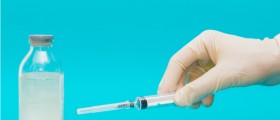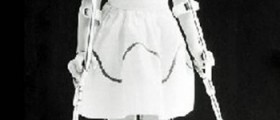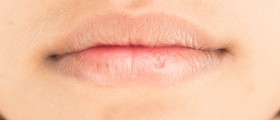Guillain Barre syndrome is a set of symptoms and signs which occur after a mild viral infection (e.g. throat infections, bronchitis, flu etc). It can also affect people who have just undergone a surgical procedure or have been recently vaccinated.
Due to different triggers the body's immune system starts to behave awkwardly and attack parts of the nervous system. As a result, the syndrome leads to muscle weakness. There is a symmetric weakness of the limbs which generally begins in the legs. The weakness may sometimes progress and cause complete paralysis.

Guillain Barre Syndrome Causes and Risk Factors
Guillain Barre syndrome can be classified as autoimmune disorder. Still, the actual cause of the abnormal immune system response has not been identified yet. Even though the condition may affect people of all ages, it is mostly reported among individuals between the ages of 30 and 50.
As it has been mentioned there are many infections that can precede Guillain Barre syndrome and are blamed for the abnormal response of the immune system. The symptoms and signs of these infections usually clear completely when Guillain Barre syndrome starts to occur.
The body attacks its own nerves (certain parts of the nerves). This is why patients complain about tingling sensation, and weakness of the affected muscles and may sometimes even end with a paralysis.
Guillain Barre syndrome is reported to occur with certain viral infections more. These include HIV, Herpes simplex infection and mononucleosis. Furthermore, the syndrome is reported to affect individuals suffering from lupus erythematosus (another autoimmune disease) and Hodgkin's disease.
Guillain Barre Syndrome Clinical Characteristics
Muscle weakness affects both sides of the body symmetrically. If facial nerves are affected, one may have problems with speech (slurred speech) and if the optic nerve is affected, one deals with blurred vision. There are abnormal sensations (tingling, numbness, etc) in both, hands and feet.
More complex cases of muscle weakness are the cause of breathing and swallowing difficulties. All the symptoms tend to progress rapidly within hours or days. Recovery starts after 2-4 weeks.
Guillain Barre Syndrome Therapy
After diagnosing the syndrome (according to clinical features, characteristic changes in the spinal fluid and electrical studies of the peripheral nerves) doctors give their best to deal with symptoms and prevent permanent complications.
There is no specific treatment for Guillain Barre syndrome. Still, majority of patients are hospitalized and treated symptomatically. The one effective treatment is plasmapheresis. This is a procedure that includes filtering of the blood. By doing so, the blood plasma gets cleared of antibodies responsible for the damage. There is one more, new treatment - intravenous injection of gamma globulin.
Most patients fully recover within a year while some of them may develop recurrent or chronic disease. Nevertheless, in spite of the prognosis all patients require intensive physical therapy.
Guillain Barre Syndrome Prevention
There is no way to prevent the disease. The explanation is quite simple. Scientists actually do not know what exactly triggers the abnormal reaction of the immune system. Because of that prevention of the condition is practically impossible.
- As individuals begin to improve, they are usually transferred from the acute care hospital to a rehabilitation setting. Here, they can regain strength, receive physical rehabilitation and other therapy to resume activities of daily living, and prepare to return to their pre-illness life.
- Complications in GBS can affect several parts of the body. Often, even before recovery begins, caregivers may use several methods to prevent or treat complications. For example, a therapist may be instructed to manually move and position the person’s limbs to help keep the muscles flexible and prevent muscle shortening.
- Injections of blood thinners can help prevent dangerous blood clots from forming in leg veins. Inflatable cuffs may also be placed around the legs to provide intermittent compression. All or any of these methods helps prevent blood stagnation and sludging (the buildup of red blood cells in veins, which could lead to reduced blood flow) in the leg veins.
- Muscle strength may not return uniformly; some muscles that get stronger faster may tend to take over a function that weaker muscles normally perform—called substitution. The therapist should select specific exercises to improve the strength of the weaker muscles so their original function can be regained.
- Occupational and vocational therapy help individuals learn new ways to handle everyday functions that may be affected by the disease, as well as work demands and the need for assistive devices and other adaptive equipment and technology.
- Some studies show that normal variations in certain genes could increase risk of developing Guillain-Barré syndrome; however, more research is necessary to identify and confirm associated genes. Since many of the genes that may increase the risk of Guillain-Barré syndrome are involved in the immune system, their roles in fighting infection might contribute to the development of the condition.

















Your thoughts on this
Loading...